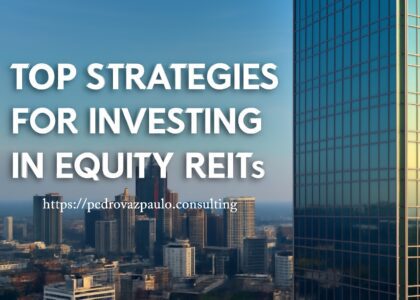Real estate has long been a reliable way to build wealth, but not every investment will yield significant returns. The key to success lies in choosing profitable real estate investments that align with your financial goals and investment strategy.
In this guide, we’ll break down how to evaluate real estate investments by focusing on market trends, property valuation, cash flow, and the return on investment (ROI).
1. Key Factors to Consider When Choosing Profitable Real Estate Investments
Before diving into any property investment, it’s essential to evaluate the broader factors that will directly impact its profitability. Understanding these key elements will give you a solid foundation for making informed investment decisions.
1.1 Understanding Market Trends and Economic Indicators
When looking for profitable real estate, one of the most important factors to consider is market trends. A booming market can lead to rapid appreciation in property value, whereas a declining market can result in stagnant or falling prices. Identifying the right market is crucial to your success.
Real estate markets fluctuate over time based on a range of factors, from economic growth to interest rates. In addition, local economic indicators such as employment rates, population growth, and new infrastructure projects can give you insights into the long-term prospects of an area.
Real Estate Market Analysis
A real estate market analysis is essential for evaluating whether an area is ripe for investment. This involves looking at:
- Supply and demand: High demand and low supply are key indicators of a profitable market. When demand outstrips supply, property values and rents tend to rise.
- Economic growth: Areas with strong economic fundamentals (e.g., job growth and rising wages) often provide better long-term returns. If a local economy is thriving, the demand for housing and commercial space is likely to increase.
- Future development: Research areas with planned developments like new shopping centers, schools, or transportation hubs. These can increase property value over time.
Understanding these market dynamics is part of an overall real estate investment strategy, which focuses on long-term growth and maximized returns.
1.2 Analyzing Property Valuation and Potential for Appreciation
The next step is to evaluate the property valuation and assess its potential for appreciation. Capital appreciation—the increase in property value over time—is one of the primary ways investors build wealth in real estate.
Property Valuation Basics
To assess property value, consider:
- Comparable sales (comps): Look at properties similar in size, location, and condition that have recently sold in the area. This will give you a good idea of the current market price.
- Income potential: For rental properties, calculate the income potential based on current market rents. This can help determine the property’s cash flow and profitability.
- Appraisal: A professional appraisal can provide an official valuation of the property, helping you understand its market worth and any areas where value could be added.
Capital Appreciation vs. Cash Flow
While capital appreciation (the increase in property value over time) is important, some investors prefer cash flow—the income generated by renting out the property. For those looking for immediate returns, rental income is key.
For beginners, it’s wise to focus on properties that offer consistent cash flow right away. For more experienced investors, properties with strong appreciation potential in rapidly growing areas may offer greater long-term gains.
1.3 Assessing Cash Flow and Return on Investment (ROI)
According to Pedrovazpaulo’s real estate investment philosophy “Cash flow is the backbone of long-term real estate success”. It’s essential for covering expenses and generating income. Return on Investment (ROI) is a measure of how much money you’re making relative to your investment, and it’s the ultimate indicator of profitability.
What is Cash Flow in Real Estate?
Cash flow is the money left over after you’ve paid for the property’s mortgage, taxes, insurance, maintenance, and other expenses. If your rental income exceeds these costs, the property generates positive cash flow.
ROI Calculation
To calculate ROI for real estate investments, you take the annual profit and divide it by the total amount invested in the property, then multiply by 100 to get the percentage return. This calculation is essential for comparing different investment opportunities.
In addition to cash flow, you should also consider other ROI metrics like the Capitalization Rate (Cap Rate), which helps you evaluate the profitability of a property based on its net operating income relative to its price.
2. Types of Real Estate Investments to Consider for Profitability
Real estate offers a wide variety of investment options, each with its own set of advantages and challenges. The best choice for you depends on your specific investment goals, risk tolerance, and available capital.
2.1 Multi-Family vs. Single-Family Homes
One of the first decisions you’ll face as an investor is whether to focus on multi-family properties or single-family homes. Each type offers distinct benefits depending on your strategy and objectives.
Multi-Family Homes
Multi-family properties, such as duplexes, triplexes, and apartment buildings, typically offer higher cash flow. Owning multiple units within a single property allows you to generate more rental income, which helps offset vacancies and maintenance costs. These properties generally provide better returns on investment, making them particularly appealing for investors looking to scale their portfolios.
- Pros: Higher rental income, better economies of scale for property management, reduced vacancy risk.
- Cons: More complex management, higher initial costs.
Single-Family Homes
Single-family homes are often easier to finance and manage, making them a popular choice for beginner investors. These properties offer a simpler investment structure, with fewer tenants to manage. However, they generally generate lower rental income compared to multi-family properties, which can limit cash flow potential.
- Pros: Easier financing, simpler management, lower initial investment.
- Cons: Potential for lower cash flow, especially in higher-priced areas.
2.2 House Hacking: A Beginner-Friendly Real Estate Strategy
For those looking to start small and reduce their living expenses, house hacking is an excellent strategy. It involves purchasing a multi-family property, living in one unit, and renting out the others. The rental income from your tenants can often cover your mortgage and other property expenses, allowing you to live for free or even generate a profit.
How House Hacking Works
By living in one unit of a multi-family property, you can use the rental income from the other units to cover your mortgage payments and other expenses. This strategy makes real estate investing more accessible by reducing your own living costs while allowing you to build equity in the property.
Why It’s Profitable
House hacking offers a reliable cash flow and lowers your financial burden, making it an attractive option for beginners. This strategy also lets you benefit from property appreciation while generating rental income, aligning with long-term wealth-building goals.
For newcomers, house hacking provides an affordable entry point into real estate, combining both cash flow and property appreciation. Once you’ve built equity and established rental income, you can scale up your investments, moving toward more lucrative opportunities, such as multi-family properties or commercial real estate.
2.3 Commercial vs. Residential Real Estate Investments
When choosing between different investment options, you’ll need to evaluate whether to invest in residential or commercial real estate. Each has its own advantages, risks, and potential returns.
Commercial Real Estate
Commercial properties, such as office buildings, retail spaces, and industrial properties, often deliver higher returns than residential properties. They tend to offer longer lease terms and more stable tenants, but they also require a larger initial investment and more complex management.
- Pros: Higher returns, longer lease terms, more stable tenants.
- Cons: Larger upfront costs, longer vacancy periods, more complex management.
Residential Real Estate
Residential properties, including single-family homes and multi-family buildings, are generally more stable and easier to manage. They provide consistent rental income from tenants, with fewer vacancies compared to commercial properties.
- Pros: Steady income, easier financing, larger tenant pool.
- Cons: Lower returns compared to commercial properties, higher maintenance costs.
Choosing Between Commercial and Residential
For beginners, residential real estate is typically a safer choice. It offers steady income and easier management. However, experienced investors looking to diversify may find commercial real estate appealing due to the potential for higher returns.
2.3 Real Estate Investment Trusts (REITs)
For investors who want exposure to large-scale commercial and residential real estate projects without the complexities of direct ownership and management, REITs (Real Estate Investment Trusts) present a viable alternative. REITs allow individuals to invest in diversified portfolios of income-generating properties, such as shopping malls, office buildings, apartments, and industrial complexes.
- Liquidity: REITs are publicly traded, meaning they are easily bought and sold on major stock exchanges. This makes them highly liquid compared to traditional real estate investments.
- Diversification: Investing in REITs allows for broad exposure to different types of real estate assets, reducing risk and providing a more balanced portfolio.
- Passive Income: Since REITs distribute most of their taxable income as dividends, they provide a steady stream of passive income for investors.
REITs are a perfect strategy for those who want real estate exposure without the hassle of property management. They also offer the opportunity for diversification beyond a traditional stock and bond portfolio.
2.4 BRRRR Method (Buy, Rehab, Rent, Refinance, Repeat)
For active investors who are interested in scaling their real estate portfolio quickly, the BRRRR method offers a powerful strategy. This method involves purchasing distressed properties, rehabbing them to increase value, renting them out to generate cash flow, refinancing to pull out your capital, and then repeating the process to build an expanding portfolio.
- Leverage Capital: By refinancing, investors can pull out equity from a property, allowing them to use this capital for purchasing new properties without needing additional funds upfront.
- Building Equity: Through rehabbing and renting out properties, investors build equity both from appreciation and tenant payments.
- Scalable: Once you’ve successfully completed a BRRRR deal, you can repeat the process, continually growing your portfolio without continually injecting new capital.
This method is ideal for investors who want to scale quickly, maximize returns, and continually reinvest in more properties.
3. Key Risks in Real Estate Investments and How to Mitigate Them
Like any investment, real estate comes with risks. However, understanding these risks and taking proactive steps can help you mitigate potential losses and maximize profits.
3.1 Market and Economic Risk
Real estate markets are affected by economic conditions. Market fluctuations can significantly impact property values and rental income.
Mitigating Market Risk
- Diversify across different regions or property types.
- Focus on high-demand areas with strong economic fundamentals, such as job growth and low vacancy rates.
- Pay attention to interest rates, inflation, and employment rates, as they can signal whether a market is likely to appreciate or decline.
3.2 Tenant and Property Management Risks
Managing tenants and maintaining properties can be demanding. Tenant issues, late payments, and property damage can quickly erode profitability.
Mitigating Tenant and Management Risk
- Tenant Screening: Thoroughly vet tenants to ensure reliability.
- Property Management: Consider hiring a property management company if you have a larger portfolio.
Mitigating Maintenance Risk
- Regular Inspections: Conduct periodic inspections to identify potential problems before they become costly repairs.
- Budget for Repairs: Set aside a portion of your rental income for ongoing maintenance and emergency repairs.
4. How to Analyze a Real Estate Deal: The Practical Steps
4.1 Evaluating Cash Flow and ROI
Before purchasing a property, calculate the cash flow and ROI to determine its profitability.
- Calculate rental income and subtract all expenses (mortgage, taxes, maintenance, property management).
- Evaluate Cap Rate and other ROI metrics to understand potential returns.
4.2 Conducting Due Diligence
Due diligence is key to ensuring the investment is sound. Before committing to a property, it’s essential to identify any potential issues that could affect its value or profitability.
- Property Inspection: Always inspect the property to identify issues such as structural damage, plumbing problems, or roofing concerns that could eat into your profits. A thorough inspection ensures you’re not overlooking costly repairs that could diminish the property’s potential.
- Legal Considerations: Research zoning laws, local rental regulations, and potential property tax changes. Legal hurdles can impact your ability to rent or sell a property, so understanding these regulations is crucial for making an informed decision.
If you’re new to real estate investing or want to ensure you’re covering all your bases, it is advisable to consult the field experts.
5. Conclusion: Taking the Next Step Toward Profitable Real Estate Investments
Choosing profitable real estate investments involves a thorough understanding of market trends, property valuation, cash flow, and ROI. By carefully evaluating these factors and considering your own financial goals, you can make informed decisions that lead to long-term wealth.
FAQs: How to Choose Profitable Real Estate Investments
1. What makes a real estate investment profitable?
A profitable real estate investment typically generates positive cash flow, offers capital appreciation, and provides a solid ROI over time. Key factors include location, property condition, and market trends.
2. How do I calculate the ROI for real estate investments?
To calculate ROI, divide the annual profit from a property by the total investment and multiply by 100. You can also use other metrics like Cap Rate and cash-on-cash return for deeper insight.
3. How do market trends affect real estate investments?
Market trends influence property values, rental income, and potential returns. Factors like interest rates, demand, and economic growth can dictate whether an investment will appreciate or underperform.
4. Should I invest in residential or commercial real estate?
For beginners, residential real estate is often a safer, easier option to get started, while commercial properties can offer higher returns but come with more complexity and risk.
5. What are the risks involved in real estate investing?
Real estate investing involves risks such as market fluctuations, tenant issues, and property maintenance. However, these can be mitigated through due diligence, property management, and diversification.











